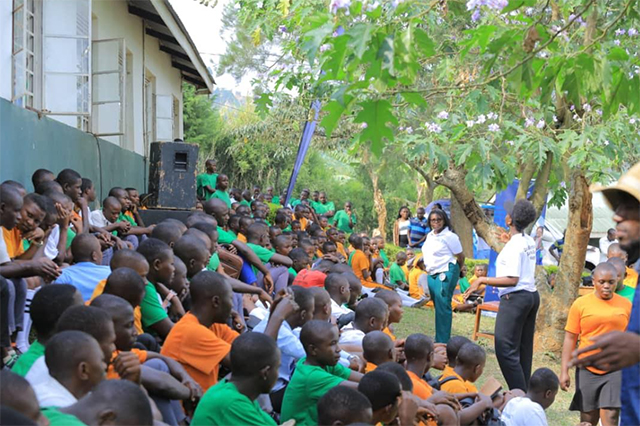
Kampala, Uganda | THE INDEPENDENT | A study around girl children and the school holidays has revealed that the third-term holidays pose extended vulnerabilities to girls than other parts of the year. This, also being the end of the year and beginning of a new one, comes with several challenges that ultimately lead to girls dropping out of school.
The third-term holiday is a critical point in the school year, coinciding with the end of the academic year and exams. “During this time, students may face increased pressure, leading to disengagement, especially if struggling academically due to financial challenges among others,” says a report by a youth-focused NGO, Reach a Hand Uganda (RAHU).
Idleness over the two-month period also raises the risk of engaging in activities that hinder their return to school such as early marriages, teenage pregnancies, and poverty, which contribute to school dropouts. In response, RAHU in January 2025 launched a Back-to-School Campaign under the theme “Safe and Supported” to encourage students, particularly young mothers, to re-enrol in school.
The campaign is aligned with the National Sexuality Education Framework (NSEF) and the revised guidelines on the Prevention and Management of Teenage Pregnancy in School Settings. It therefore, advocates for school re-entry approach for young mothers, through educational interventions while fostering a supportive environment for students, especially girls to return to school.
Throughout the initiative, RAHU organized various activities aimed at encouraging students to return to school despite the challenges. The survey which was also conducted as part of the campaign, revealed that 36 percent of respondents attributed young mothers’ failure to return to school to stigma after childbirth, while 38 percent cited financial difficulties.
Additionally, 14 percent identified a lack of childcare support in case the mother returns to school, and 12 percent pointed to inflexible school policies towards student-mothers as a major challenge.
The activities held included a Back-to-School Walk in Lungujja, a school outreach at St. Jannan SS in Kabalagala and Bwesumbu Peas High School in Kasese, along with digital engagements with the public.
Humphrey Nabimanya, RAHU CEO, reemphasized that stigma is one of the major subtle factors driving school drop out in fear or discrimination or bullying. He says that the campaign, along with its theme, focuses on being sensitive to students’ challenges and providing the necessary support without discrimination.
“This involves combating stigma, enhancing school policies, training teachers to be more supportive, and encouraging parents to act as pillars of support—all of which help students feel comfortable returning to school,’’ he said.
He urged for openly addressing these issues as a crucial approach to breaking the stigma.
The campaign also provided a platform for RAHU peer educators to participate in the activities, allowing them to gain hands-on experience in creating positive change within their communities.
Masika Rinnah, one of the peer educators, shared how transformative the academy has been for her.
“The experience has not only provided me with theoretical knowledge but has also equipped me with practical skills to make a real impact.” School dropouts remain a significant concern in Uganda, according to private expert and national reports. For example, the Uganda Bureau of Statistics (UBOS), estimated that 15 percent of girls aged 15-19 become pregnant, making teenage pregnancy one of the leading causes of school dropouts.
Data from the Ministry of Education shows that 25,000 schoolgirls dropped out due to pregnancy in 2020, and this number increased to 35,000 in 2021. RAHU quotes recent media reports indicating that more than 3,100 pupils drop out of primary school across the country daily, resulting in over one million learners failing to sit for the Primary Leaving Examinations (PLE) each year.
According to data from the Ministry of Education and Sports in Uganda, approximately 1.9 million children are enrolled in Primary One each year, with a significant number dropping out before completing primary school. The2024 national census by UBoS also shows that a bigger number of children attend primary school (66.8 percent) but a few proceed to Secondary school. Statistics show that only 22.3 percent attend secondary school.
*****
URN
 The Independent Uganda: You get the Truth we Pay the Price
The Independent Uganda: You get the Truth we Pay the Price



